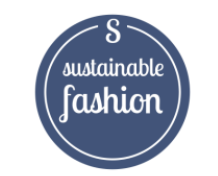In the quest for a healthier planet, the role of sustainable fashion has never been more critical. As consumers, our clothing choices have a profound impact on the environment, from the water used in cotton production to the carbon emissions of global shipping. However, the tide is turning towards more eco-conscious apparel, signaling a promising shift in reducing our carbon footprint through sustainable fashion practices.
The Impact of Fashion on the Environment
The fashion industry is a significant contributor to global carbon emissions, second only to the oil industry. Traditional fashion production methods are resource-intensive, relying heavily on water, chemicals, and fossil fuels. This not only depletes the Earth’s natural resources but also results in substantial carbon dioxide emissions. Fast fashion exacerbates the problem by promoting a culture of disposability, where clothes are worn for a short period and then discarded, leading to massive waste and further environmental degradation.
How Sustainable Fashion Makes a Difference
Sustainable fashion offers a ray of hope in this scenario. It focuses on creating clothing that minimizes environmental impact through:
- Use of Eco-friendly Materials: Sustainable brands opt for organic cotton, bamboo, lyocell, and recycled materials, which require less water and chemicals.
- Energy-efficient Production: Many sustainable fashion companies invest in renewable energy sources for their manufacturing processes, cutting down on carbon emissions.
- Ethical Labor Practices: Beyond environmental concerns, sustainable fashion also encompasses fair wages and safe working conditions for workers.
- Durability over Disposability: High-quality, timeless pieces are designed to last, encouraging consumers to buy less and wear longer.
Practical Ways to Support Sustainable Fashion
Adopting a more sustainable approach to fashion doesn’t have to be complicated. Here are some actionable steps everyone can take to help reduce carbon emissions through their fashion choices:
1. Buy Less, Choose Well
Before making a purchase, consider if it’s something you really need and if it will last. Investing in quality over quantity reduces the need for frequent replacements, cutting down on waste and carbon emissions associated with production and shipping.
2. Support Eco-friendly Brands
Do your research and support brands committed to sustainable practices. Look for transparency in materials used, production methods, and the brand’s overall environmental footprint.
3. Embrace Second-hand and Vintage
Buying second-hand or vintage clothing is an excellent way to extend the life cycle of garments, keeping them out of landfills and reducing the demand for new production.
4. Care for Your Clothes Properly
Taking good care of your clothes so they last longer is another simple yet effective way to be more sustainable. Follow care instructions, repair instead of discard, and consider eco-friendly laundry practices.

